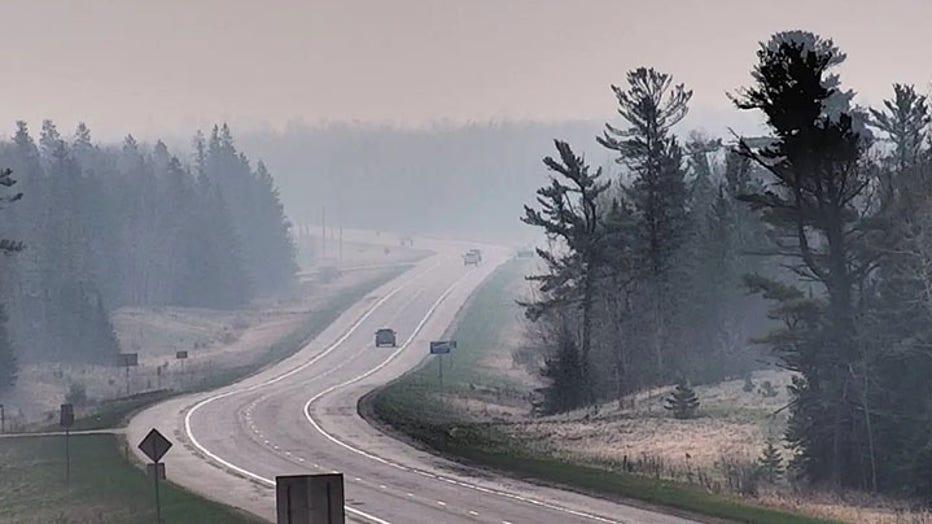Canada’s wildfire season prompts air quality alerts in US
Canadian wildfires causing air quality issues across the U.S
As Canada is experiencing one of its worst wildfire seasons, parts of the U.S continue to be impacted.
ALBERTA, Canada - The combination of warm temperatures and an ongoing drought have helped fuel several fires in western Canada, which has triggered thousands to leave their homes.
One of the largest fires burning in the province of British Columbia is called the Parker Lake Wildfire. As of Sunday, the blaze had burned more than 6,100 acres, and firefighters said it was continuing to show extreme behavior due to dry brush and winds.
Local authorities urged the entire town of Fort Nelson to evacuate and use as few vehicles as possible in an effort to conserve fuel in the region about 400 miles east of Juneau, Alaska.
Wildfires were also reported in neighboring Alberta, where thick smoke and poor air quality were experienced in large parts of the province. An evacuation alert was issued for Fort McMurray in Alberta as crews responded to what they described as an "out-of-control wildfire" southwest of town that had burned more than 13,500 acres as of Sunday.
"Conditions in many parts of B.C., and especially in the Prince George Fire Centre (PGFC), are unseasonably dry and more typical of those observed in the late summer. As a result, fuels are more susceptible to ignition and wildfires can spread more quickly," the British Columbia Wildfire Service said.
Additionally, authorities were monitoring fires that have rekindled since the historic firestorm of 2023, which burned more than 45 million acres.

Hazy skies were seen Sunday, May 12, 2024, over Cook, Minnesota, as smoke from wildfires burning in western Canada spread southward into the Upper Midwest (Minnesota Department of Transportation)
The latest North America Drought Monitor showed nearly half the country officially in drought conditions, with the driest regions being located in the provinces of Alberta and British Columbia.
An El Niño regime caused extensive snowfall deficits across much of the country, potentially setting up regions for another record-breaking fire season.
"We know from the forecasts that in western and northern Canada, because of a dry winter because of some challenges that are going to be faced, it is likely to be a very bad forest fire season," Prime Minister Justin Trudeau said while visiting British Columbia last week.
Will smoke impact the US?
Even though prevailing winds at times will send smoke toward the Lower 48, computer forecast models show particles this round do not have the staying that they did last year, likely because of the infancy of the season.
In 2023, hundreds of fires in Canada contributed to some U.S. cities seeing their worst air pollution of all time, creating an orange haze in hazardous conditions.
Some Major League Baseball games were postponed, and local health authorities encouraged residents to wear face masks if they ventured outdoors.
If there are any effects felt over the next couple of weeks, the FOX Forecast Center said they’ll likely be confined to the U.S.-Canada border region and not venture far to the south.
On Sunday, air quality alerts were posted for all of Minnesota through Monday morning as smoke from the Alberta fires invaded parts of the northern Plains and Upper Midwest.
Air quality index monitors from Montana through the Dakotas and Minnesota reached the "unhealthy" range on Sunday. However, "very unhealthy" and even "hazardous" air readings were reported to the northwest in Alberta.
Canada’s wildfire season typically begins in May and runs through September, but most blazes are reported in June and July.
Find more updates on this story at FOXWeather.com.

